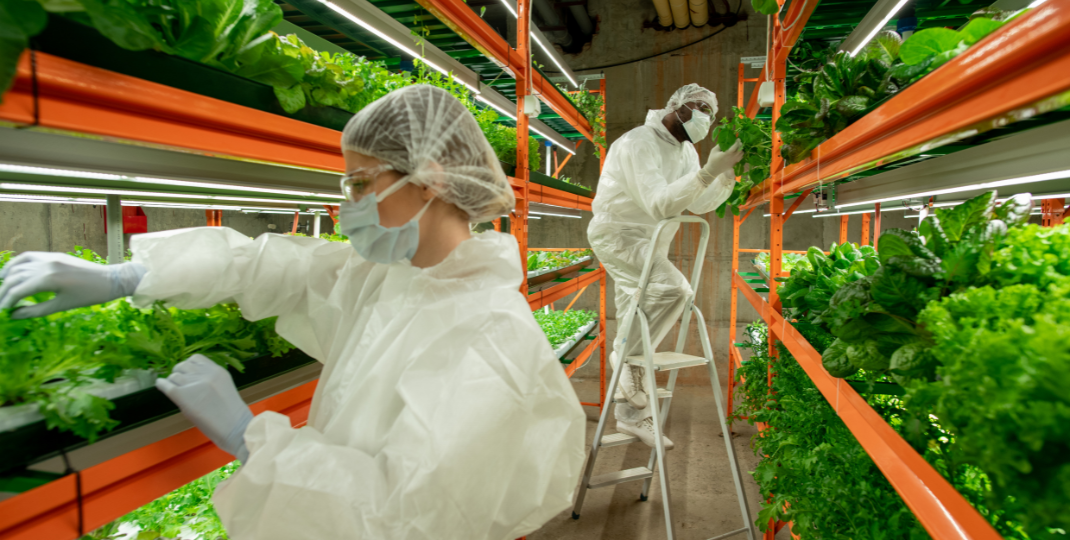Single-cell protein production from algae is a promising and innovative method of addressing the increasing global demand for protein sources. Algae, a diverse group of aquatic organisms that can grow rapidly and abundantly, offer numerous advantages in terms of sustainability and efficiency. This emerging field focuses on harnessing the natural ability of algae to convert sunlight and carbon dioxide into valuable proteins, which can be used as a viable alternative to traditional protein sources such as meat and soy. The production process is not only environmentally friendly, but it also holds great potential for providing a sustainable solution to the world's growing population's dietary needs. As research and technological advancements continue to improve, single-cell protein production from algae is expected to play a significant role in meeting future protein demands while minimizing environmental impact.

What are the main challenges in scaling up single cell protein production from algae?
One of the main challenges in scaling up single cell protein production is the optimization and efficiency of cultivation systems. Algae are sensitive organisms, and their growth can be influenced by various factors such as temperature, light intensity, nutrient availability, pH levels, and contamination control. Scaling up the production requires designing and implementing large-scale cultivation systems that can provide consistent and controlled conditions. Another challenge is the cost-effectiveness of the process, as it involves high initial investments for infrastructure and equipment. Additionally, harvesting and processing techniques need to be developed to efficiently extract and purify the proteins from the algae biomass. Overall, addressing these challenges is crucial to ensure a sustainable and economically viable production of single cell protein from algae on a larger scale.

How can we optimize the nutrition and growth conditions for algae to produce high-quality single cell protein?
To optimize the nutrition and growth conditions for algae in order to produce high-quality single cell protein, several factors need to be considered. Firstly, providing a suitable nutrient mix is crucial. Algae require essential nutrients such as nitrogen, phosphorus, and micronutrients, which can be supplied through appropriate fertilizers or organic waste products. Additionally, maintaining optimal pH levels, temperature, and light intensity is vital for algae growth. Adequate carbon dioxide supply and efficient mixing of the culture also play a significant role. Furthermore, manipulating the growth conditions, such as adjusting the nutrient concentrations, temperature, or light/dark cycles, can stimulate the production of specific proteins, enhancing the quality of the single cell protein produced. Continuous monitoring and optimization of these parameters ensure the maximum yield of high-quality single cell protein from algae.
What are the potential risks and environmental impacts associated with large-scale algae cultivation for single cell protein production?
Large-scale algae cultivation for single cell protein production can have potential risks and environmental impacts. Firstly, there is a risk of introducing invasive species or genetically modified organisms into natural ecosystems, which can disrupt local biodiversity and ecological balance. Additionally, the use of fertilizers and nutrients for algae growth can lead to eutrophication in water bodies, causing oxygen depletion and harming aquatic life. The large quantities of water required for algae cultivation can also strain freshwater resources, especially in areas with limited water availability. Furthermore, the disposal of excess biomass and wastewater from the cultivation process can potentially contaminate soil and water sources if not managed properly. Overall, careful monitoring and management are necessary to mitigate these risks and minimize the environmental impacts associated with large-scale algae cultivation.
What technological advancements are needed to improve the efficiency and cost-effectiveness of algae-based single cell protein production?
To improve the efficiency and cost-effectiveness of algae-based single cell protein production, several technological advancements are required. Firstly, there is a need for advancements in algae cultivation techniques, such as the development of high-density and genetically modified strains that can efficiently convert sunlight and nutrients into biomass. Additionally, improvements in harvesting methods are essential to increase the yield and reduce energy consumption. This could involve the use of novel separation techniques like flocculation or membrane filtration. Furthermore, advances in downstream processing technologies, such as extraction and purification methods, will play a crucial role in maximizing protein recovery while minimizing costs. Lastly, innovations in bioreactor design and automation can enhance scalability and productivity, ensuring large-scale commercialization of algae-based single cell protein production.
Are there any regulatory barriers or limitations that need to be addressed for widespread adoption of algae-based single cell protein?

There are indeed regulatory barriers and limitations that need to be addressed for the widespread adoption of algae-based single cell protein (SCP). One key challenge is the lack of clear regulations governing the production, safety, and labeling of SCP. As a novel and emerging food source, SCP does not have specific regulatory frameworks in many countries, making it difficult for companies to navigate the regulatory landscape and gain consumer acceptance. Additionally, there may be concerns regarding the potential presence of toxins or pollutants in algae-derived SCP, which require thorough testing and regulation to ensure consumer safety. Therefore, developing appropriate regulatory standards and guidelines for SCP production, labeling, and safety is crucial for its widespread adoption as a viable alternative protein source.

How does the nutritional profile and quality of single cell protein produced from algae compare to traditional protein sources?
The nutritional profile and quality of single cell protein produced from algae often compares favorably to traditional protein sources. Algae-based proteins are often rich in essential amino acids, vitamins, minerals, and omega-3 fatty acids, making them a highly nutritious option. Additionally, they are usually low in saturated fats and cholesterol, which can be beneficial for individuals seeking a healthier diet. Furthermore, algae-based protein production generally requires fewer resources, such as land and water, compared to traditional protein sources like meat or soy, making it a more sustainable alternative.
What are the potential applications and market opportunities single cell protein production from algae for algae-based single cell protein?
Algae-based single cell protein has potential applications and market opportunities in various industries. It can be used as a nutritional supplement in food and beverages, providing a source of high-quality protein, essential amino acids, vitamins, and minerals. Algae-based single cell protein also has potential as a feed ingredient for livestock and aquaculture, reducing the reliance on traditional protein sources such as soybean meal and fishmeal. In addition, it can be utilized in the production of functional foods, nutraceuticals, and pharmaceuticals due to its bioactive compounds. The increasing demand for sustainable and plant-based protein alternatives, along with the growing interest in algae cultivation for biofuel production, creates a favorable market environment for algae-based single cell protein.

How can we ensure the sustainability and long-term viability of algae-based single cell protein production?

To ensure the sustainability and long-term viability of algae-based single cell protein production, several measures can be taken. Firstly, it is crucial to develop efficient cultivation systems that optimize algae growth and minimize resource consumption, such as water, nutrients, and energy. Implementing advanced monitoring and control technologies can help achieve this goal. Secondly, research should focus on selecting and engineering algae strains that possess high protein content, rapid growth rate, and increased resistance to environmental stressors. This will improve the efficiency and reliability of protein production. Additionally, collaboration between academia, industry, and governments is essential to promote research, development, and adoption of algae-based protein production methods. Lastly, sustainable practices like recycling and reusing waste streams and using renewable energy sources for cultivation and processing can contribute to the overall sustainability of the production process.
The Future of Sustainable Protein Production: Harnessing Algae for Single Cell Protein
In conclusion, single cell protein production holds great potential as a sustainable and environmentally friendly solution to the increasing global demand for protein. Algae are rich in essential amino acids, vitamins, and minerals, making them an excellent source of nutrition. Furthermore, their rapid growth rate and ability to thrive in various environments make them highly suitable for large-scale production. The production of single cell protein from algae not only reduces the strain on traditional protein sources but also offers a promising solution to food insecurity and malnutrition worldwide. With further research and technological advancements, this innovative approach has the capability to revolutionize the food industry and contribute to a more sustainable and resilient future.
